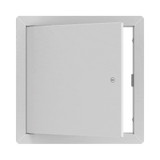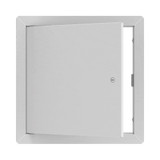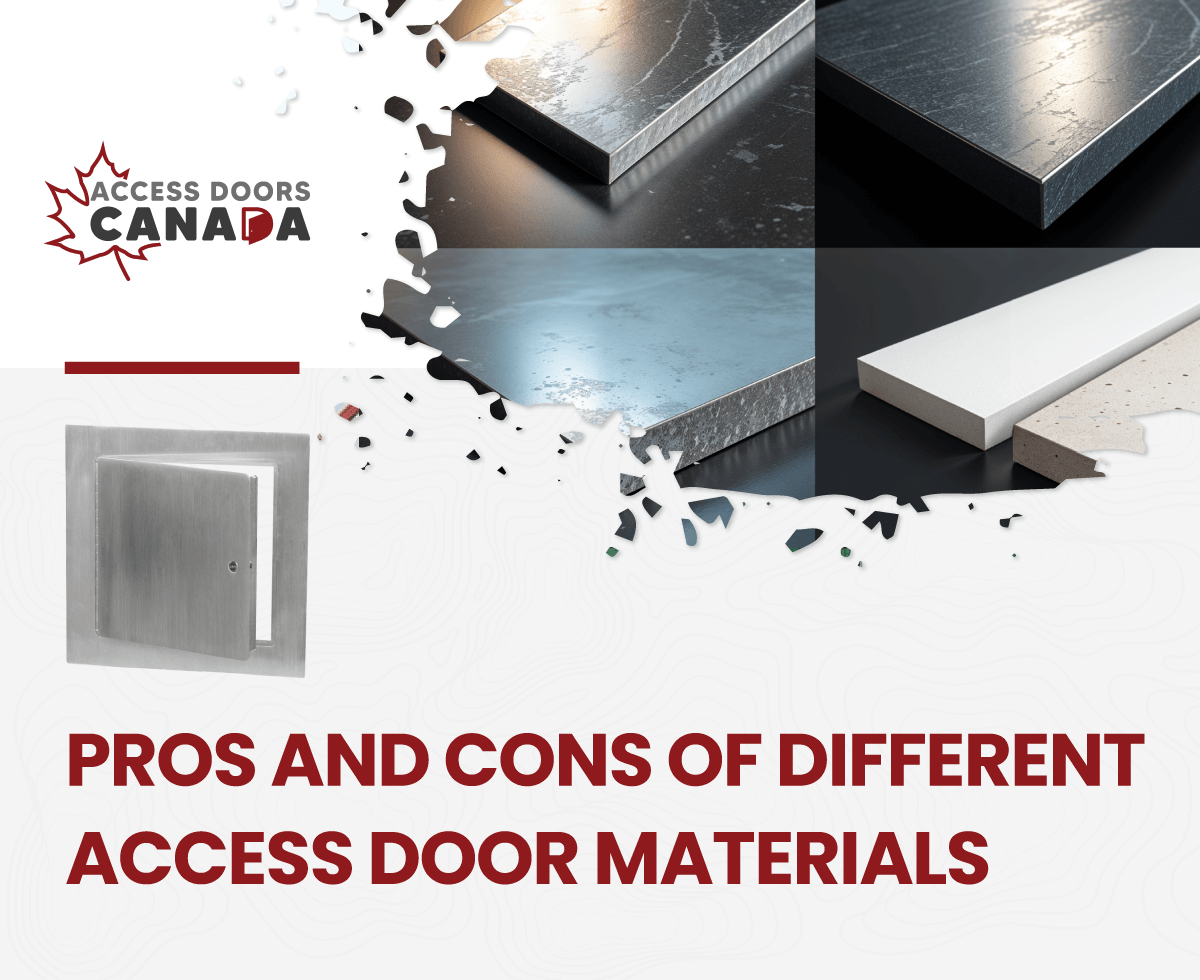Pros and Cons of Different Access Door Materials
Access doors are essential in residential, commercial, and industrial spaces, providing convenient access to mechanical, electrical, and plumbing systems. They come in different materials, each suited to diverse needs and environments. Knowing the strengths and limitations of these options helps you make well-informed decisions when selecting the most suitable one for your project.
In this article, we’ll explore the materials used for access doors, highlighting their pros and cons.
Aluminum Access Doors
Pros:
- Lightweight and Easy to Install: Aluminum's lightweight nature makes it easier to handle and install. This promotes quicker installation and faster project completion.
- Stylish: With its modern appearance, aluminum adds a contemporary touch to any space. It's often used in commercial and residential settings where aesthetics is important.
- Corrosion-Resistant: Aluminum naturally resists rust and corrosion, making it an excellent choice for areas with high moisture levels or coastal environments. It maintains its appearance and functionality over time, even in challenging conditions.
For those considering an aluminum access door for their project, the ADC-WB-AL - aluminum insulated access door is a standout option that offers an excellent blend of lightweight construction and sleek design.
This insulated access door also features a continuous hinge and screwdriver-operated latch for secure access. It includes insulation for enhanced energy efficiency and temperature regulation. When it comes to appearance, its modern look fits seamlessly with any architectural style.
Cons:
- Less Resilient: While aluminum is durable, it’s not as strong as steel. This might be a concern in high-traffic areas or locations where the door will experience heavy use.
- Costly: Aluminum can be expensive. The long-term benefits of corrosion resistance and ease of installation may justify the cost, but budget-conscious projects might find this a drawback.
Steel Access Doors
Pros:
- Durable: Steel access doors are well-known for their strength and longevity. They are built to endure heavy use and resist impacts, making them a dependable choice for industrial and commercial environments. Steel access doors can be placed in a busy factory, warehouse, or high-traffic commercial building.
- Secure: Security is a key feature of steel access doors. Their strong construction makes them resistant to break-ins and tampering, providing a reliable barrier against unauthorized access. This makes them ideal for financial institutions, government buildings, or banks.
- Flexible: Steel is versatile and can be adapted for unique requirements. Whether for soundproofing or enhanced security, steel access doors can meet specific requirements.
Cons:
- Prone to Rust: One of its downsides is that it can rust over time, especially in humid or coastal environments where moisture is a constant concern. However, this issue can be addressed by applying protective coatings or treatments like galvanization, which prevent rust and extend the door's lifespan. Regular maintenance and inspections for corrosion can also improve the door's condition over time.
- Heavy: Steel is heavy, making installation more challenging than lighter options like aluminum. The weight of steel access doors can increase labour costs and may require added manpower or equipment for installation. However, choosing thinner steel or hiring professionals experienced in installing steel doors can help make the process smoother and more efficient.
Glass Fibre Reinforced Gypsum (GFRG) Access Doors
Pros:
- Lightweight and Customizable: Glass fibre reinforced gypsum is lighter than steel or aluminum. This makes it much easier to handle during installation, simplifying the overall process. The ease of customization allows it to be shaped into many sizes, styles, and textures.
- Fire Resistant: One of the standout benefits of glass fibre reinforced gypsum is its exceptional fire resistance. This one is inherently non-combustible, making it a safe choice for areas where fire-rated access doors are needed.
- Versatile: It offers remarkable aesthetic flexibility. Glass fibre reinforced gypsum can be moulded into various textures, finishes, and designs, seamlessly blending into different architectural styles.
Cons:
- Less sturdy: While glass fibre reinforced gypsum is durable, it may not hold up to heavy use as effectively as metals like steel or aluminum. In high-traffic areas, it can be prone to cracking or chipping. Reinforcement or placement in less exposed places can help solve these issues.
- Moisture-Sensitive: Glass fiber reinforced gypsum absorbs moisture, which can cause damage over time, especially in humid environments. Prevent this by applying proper coatings or using it in dry areas.
- Costly: This material can have a higher upfront cost than others. But its benefits, including its fire resistance and design flexibility, make it a valuable investment that tends to pay off in the long term.
Galvannealed Steel Access Doors
Pros:
- Corrosion-Resistant: Galvannealed steel offers durability and corrosion resistance with its galvanized coating, providing dual protection.
- Reliable: The combination of strength and corrosion resistance ensures that galvannealed steel has a long lifespan, even in challenging environments. This durability makes it a dependable choice over time, reducing the need for frequent replacements.
- Versatile: Ideal for indoor and outdoor applications, galvannealed steel makes it a practical choice for many environments, ensuring consistent performance wherever it's used.
Cons:
- Thermally Conductive: Galvannealed steel conducts heat and cold, which may not be ideal in certain environments. They might not offer the best thermal protection without proper insulation, leading to potential temperature fluctuations.
- Complex to Repair: Damage or corrosion in galvanized steel access doors can complicate repairs. Fixing these issues often demands specialized tools and skills.
To Sum Up
Choosing the right access door material involves considering factors such as the environment, budget, and the specific demands of your project. Every material—such as aluminum, steel, stainless steel, and galvannealed steel—offers benefits and drawbacks. Considering its strengths and weaknesses will help you choose the best access doors for your project's needs.
At Access Doors Canada, we recognize that each material serves a different purpose. That's why we offer access doors in various materials, allowing you to select the one that best meets your needs. Our products—from insulated access doors to roof access hatches—are readily available, so you can easily choose your project.
Request a quote today to explore our solutions. You may also call us at (800) 679-3405 for help, and we'll guide you through the selection process.









